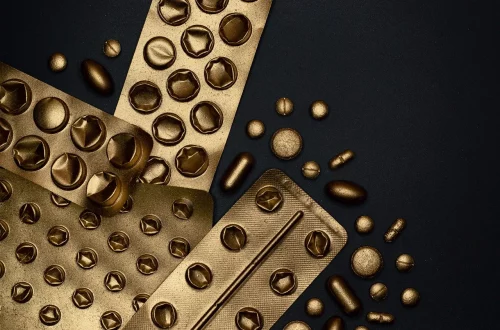
Cat Stitches Healing Stages: A Visual Guide with Pictures
When a beloved feline undergoes surgery or suffers a significant injury, the sight of stitches can be both alarming and concerning for pet owners. The healing process is a crucial part of recovery, and understanding the stages of healing can help alleviate some of the anxiety that comes with caring for a pet in recovery. Cats, much like humans, go through specific phases as their wounds heal. These stages can vary in duration and appearance, depending on several factors, including the type of injury, the location of the stitches, and the cat’s overall health.
As responsible pet owners, it’s essential to monitor our furry friends during the healing process. Knowing what to expect can help you provide the necessary care and comfort. Stitches, although necessary for proper healing, can be a source of stress for both you and your pet. Observing changes in the stitching site and understanding the normal healing timeline will empower you to take proactive steps in ensuring your cat’s comfort and well-being. This visual guide will illustrate the healing stages following a surgical procedure or injury, providing you with the knowledge to support your feline companion effectively.
Understanding the Healing Process
The healing process for cats involves several stages that can be generally categorized into three main phases: inflammation, proliferation, and maturation. Each of these phases plays a vital role in ensuring that your cat recovers fully from their injury or surgery.
The first phase, inflammation, typically begins immediately after the injury or surgery. The body’s natural response to trauma is to send blood to the affected area, leading to swelling, redness, and warmth. This phase usually lasts for a few days and is characterized by the formation of a protective clot at the wound site. It is crucial during this time to keep the area clean and monitor for any signs of infection, such as excessive swelling or discharge.
Following the inflammation phase, the body enters the proliferation phase. This stage is marked by the formation of new tissue as the body begins to repair itself. In this phase, fibroblasts (cells that help in wound healing) and new blood vessels grow into the area, creating a foundation for skin regeneration. You may notice the stitches appearing tighter as the surrounding tissue begins to knit together. This phase can last from several days to a couple of weeks, depending on the severity of the wound and the cat’s health.
Finally, the maturation phase, also known as the remodeling phase, can last for several weeks to months. During this time, the newly formed tissue continues to strengthen and organize. The scar may become less prominent, and the overall appearance of the stitched area will improve. It’s essential to keep monitoring the site during this phase, ensuring that your cat does not lick or irritate the stitches, as this can lead to complications.
Understanding these stages helps you recognize what is normal and what may be a cause for concern. If you notice anything unusual during any of these phases, such as increased redness, swelling, or discharge, it is advisable to consult your veterinarian for guidance.
Signs of Healing: What to Look For
Recognizing the signs of healing is crucial for ensuring that your cat is on the right track to recovery. During the healing process, there are several visual indicators that you can monitor to assess the condition of the stitches and the surrounding area.
Initially, after the surgery or injury, you may notice some swelling around the stitches. This is a normal response as the body begins its healing process. However, as the days progress, you should observe a gradual reduction in swelling. The redness and warmth that accompany inflammation should also start to diminish. If you see these positive changes, it is a good indication that the healing process is progressing as it should.
Another sign of healing is the appearance of the stitches themselves. As the body repairs the tissue, the stitches may appear tighter, and the area around them may become less inflamed. In some cases, you might even notice a scab forming over the stitches, which is a natural part of the healing process. Scabs protect the wound from external elements and promote healing beneath the surface.
Additionally, the behavior of your cat can provide insight into their healing progress. If your cat is more active, eating well, and showing interest in their surroundings, these are generally positive signs that they are recovering. Conversely, if your cat is lethargic, refusing to eat, or showing signs of pain, it may indicate complications that require veterinary attention.
While it’s essential to monitor these signs, you should also be cautious about over-examining the stitched area. Excessive handling can lead to irritation or stress for your cat, which can hinder their recovery. Instead, observe from a distance and only handle the area when necessary, such as when applying prescribed medications or cleaning the site.
Post-Operative Care: Tips for a Smooth Recovery
Providing proper post-operative care is vital for ensuring your cat heals effectively and comfortably. There are several steps you can take to facilitate a smooth recovery process.
First, creating a calm and quiet environment for your cat is essential. Minimize noise and disturbances in the area where they will be recuperating. A cozy bed in a designated room can help your cat feel safe and secure. Avoid introducing new pets or activities that may stress your cat during this time.
Next, it’s crucial to follow your veterinarian’s post-operative instructions meticulously. This includes administering any prescribed medications, such as pain relievers or antibiotics, at the specified times. If your veterinarian has advised you to limit your cat’s physical activity, ensure they are not jumping or running around during the initial healing phases.
Monitoring the surgical site is another critical aspect of post-operative care. Check the stitches regularly for any signs of infection, such as increased redness, swelling, or discharge. If you notice any concerning symptoms, don’t hesitate to reach out to your veterinarian for advice.
Additionally, consider using an Elizabethan collar (often referred to as a “cone”) to prevent your cat from licking or biting at the stitches. While it may seem uncomfortable for them, it is an effective way to protect the healing area. Ensure that the collar fits properly and allows your cat to eat and drink without difficulty.
Lastly, maintaining a healthy diet during recovery is essential for your cat. Providing nutritious food can support their healing process and boost their overall well-being. Speak with your veterinarian about any dietary recommendations that may aid in your cat’s recovery.
By following these tips and being attentive to your cat’s needs, you can significantly enhance their healing experience and help them return to their playful selves in no time.
**Disclaimer:** This article is for informational purposes only and should not be considered as medical advice. For any health concerns regarding your pet, please consult a qualified veterinarian.




